Ultimate Guide To The Blue Mountains National Park, Australia
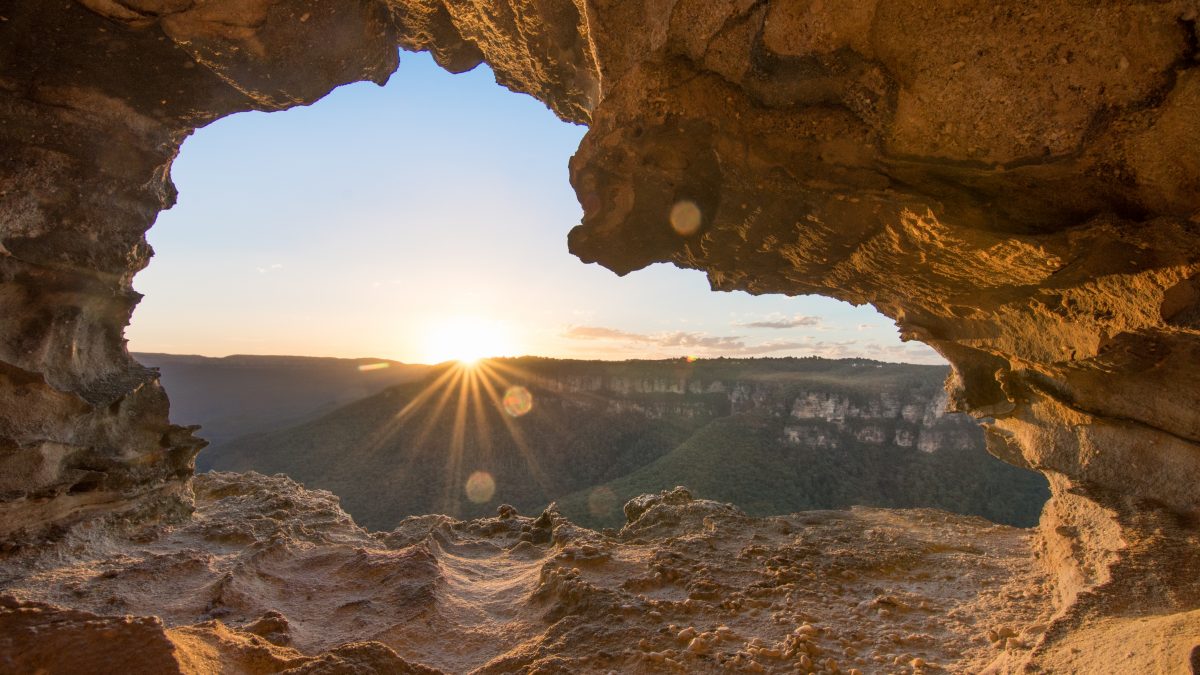
The Blue Mountains National Park is absolutely iconic. Located close to Sydney, it’s one of the most beautiful places in all of Australia. It’s also a great place to indulge in some outdoor activities like hiking, mountain biking, camping, and adventure sports. Whether you’re an active traveler who’s always on the go or just wants to relax in nature, this is the ideal park to visit during your next trip to Australia.
What Is The Blue Mountains National Park?
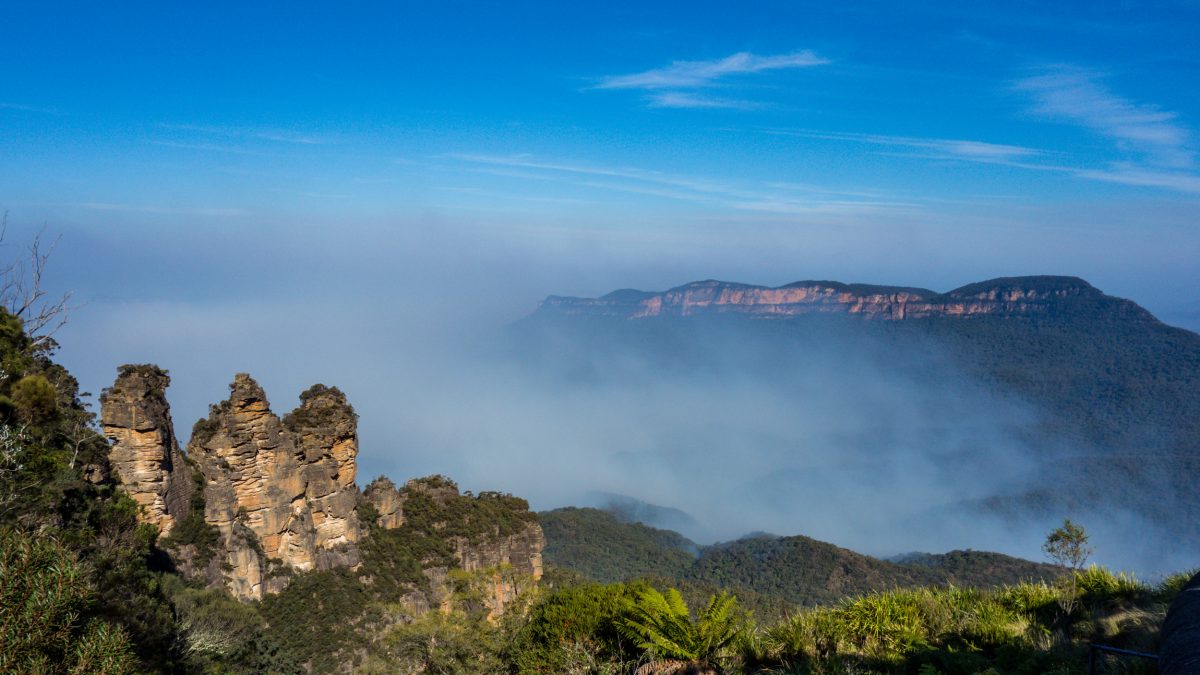
©Photo by Visions of Domino on Flickr
The Blue Mountains National Park is located in New South Wales, which is in eastern Australia. It’s about 80 kilometers or 50 miles west of Sydney and is a protected national park. The park itself is fairly irregular as it’s broken up by urban areas and roads, but it covers around 267,954 hectares or 662,130 acres. The park contains some of the most dramatic canyons, lookouts, waterfalls, and valleys in Australia.
This national park isn’t all mountains. There are rivers and even an uplifted plateau in the area, which makes for stunning views. The Blue Mountains National Park is one of eight protected areas that make up the UNESCO World Heritage-listed Greater Blue Mountains Area. And it also forms part of the Great Dividing Range, which is Australia’s most substantial range and the third longest land-based range in the world.
How To Get There
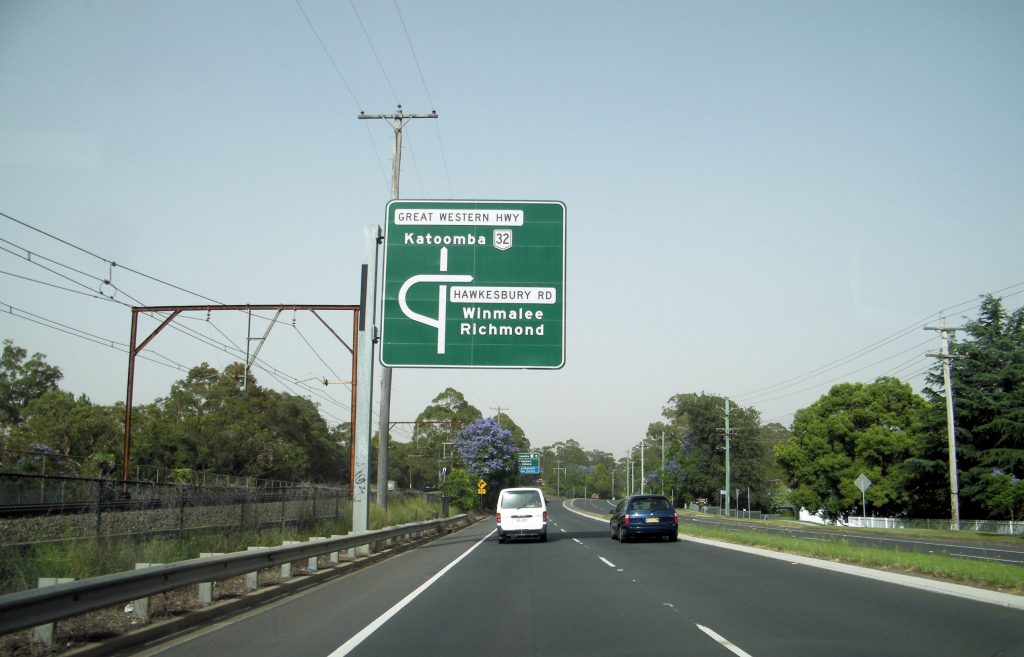
By Coolcaesar at English Wikipedia, CC BY-SA 3.0, https://commons.wikimedia.org/w/index.php?curid=8791115
The easiest way to get to the Blue Mountains National Park is by car. Your actual route will depend on where you’re going and what you want to see. If you’re traveling from Sydney, take the M4 and the Great Western Highway to visit Glenbrook, Katoomba, Blackheath and the southern side of the Lower Grose Valley. To get to the Southern Blue Mountains, you can go via Oberon or the Jenolan Caves.
If you’re driving from Richmond, then take the Bells Line of Road to get to Mount Wilson or the northern side of the Lower Grose Valley. From Bells Line of Road, you can also connect with the Great Western Highway via the Darling Causeway and visit other areas.
The Blue Mountains National Park is also accessible via public transport. Wherever you’re coming from, stop at the Blackheath, Glenbrook, Leura, Woodford, Katoomba, Faulconbridge, or Wentworth Falls stations.
The Best Time To Visit Blue Mountains National Park
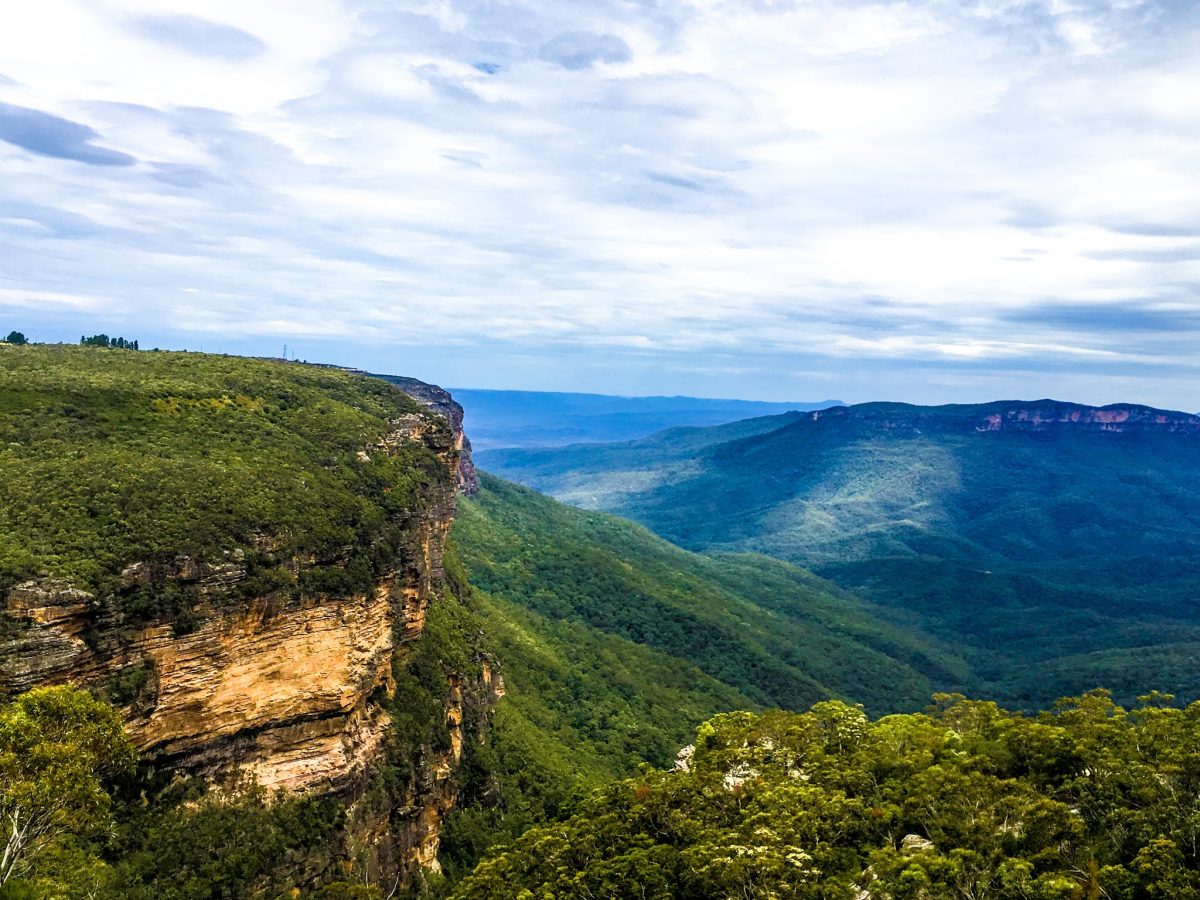
©Photo by Aneesh Yellishetty on Wiki Commons
Before you visit the Blue Mountains National Park, make sure you check the park’s website. Otherwise, you might find parts of the park closed because of poor weather or fire danger. The park is a spectacular place to visit at any time of year. The temperatures are a little more variable in this area than they are in Sydney. In winter you can expect a daytime average of around 16°C (60F). And in summer the average is about 29°C (84F), though it is still Australia, so that can vary a lot.
There is something to see in every season in this park. In summer, which is December to February, it’s lovely and warm but cooler than the temperatures in Sydney. It may rain at this time of year, but the waterfalls and the sight of the clouds against the mountains more than makeup for it.
If you want to hike, then autumn is the best time to visit. This is between March and May and the days are cooler, with less rain. Winter is the peak season in the Blue Mountains National Park. Between June and August, the days are cool and the nights cold and there are lots of events and festivals on. This includes the famous Winter Magic Festival in June and Christmas in July.
Spring is the time to visit if you love nature. This is when flowers bloom and the gardens are at their best. So, visit the park between September and November if you want to see the best show that nature can put on.
Tickets and Opening Hours
Most parts of the Blue Mountains National Park are free to enter. However, if you’re entering through the Glenbrook area, then you will need to pay an 8-dollar fee per car. If you’re visiting a lot of parks while you’re in New South Wales or you’re a regular visitor, considering getting a multi Park Pass. There are several different types of passes and they give you access to different parks over a 1 year or 2-year period.
The Blue Mountains National Park is open year-round but may close during times of poor weather or fire danger. Certain parts of the park close overnight as well, so make sure you check the specific information for the areas you want to visit. The best place to get more detailed information is from the Blue Mountains Heritage Center. It’s open 9 am to 4.30 daily every day except for Christmas Day.
Once you’re in the park, it’s time to start checking out some of its amazing attractions.
Hike for the Three Sisters
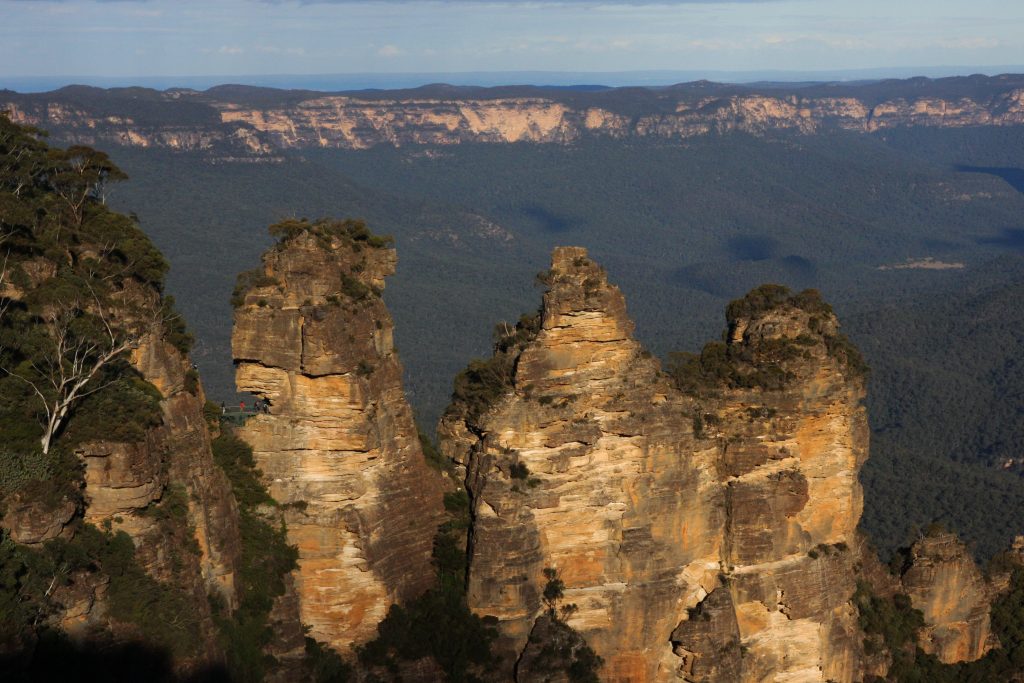
Photo by Si Thu Aung on Unsplash
The Three Sisters are the most popular attraction in the Blue Mountains National Park. They’re sandstones peaks that were formed into their distinctive shapes thousands of years ago by erosion. The peaks are stunning enough set against the lush greenery, but there are also some great walks and lookouts in the area.
For the most spectacular view of the Sisters, visit Echo Point Lookout. This is also a good place to start if you want to go hiking. Lots of great walking trails start at the lookout including the 4.2-kilometer walk to Scenic World. This is a hard walk with lots of stairs, so you will need to be reasonably fit to make it.
Admire the Street Art Murals at Katoomba
Katoomba was developed in the early 1900s as a mountain resort area and has retained some of that old charm. It’s filled with art deco buildings from the 1920s and 1930 and is a great place to stop and have lunch while you’re visiting the Blue Mountains National Park.
While you’re in Katoomba, make sure that you visit the Waradah Aboriginal Center, where you can learn about the traditional culture. And if you like art, then you’ll enjoy the creativity and artistry of the Katoomba street art murals. There are also some great places to eat, have a cocktail, or just sit down with a coffee in this area, including the Elephant Bean Café and The Champagne Charles, a cocktail bar in the Carrington Hotel.
Explore the Jenolan Caves
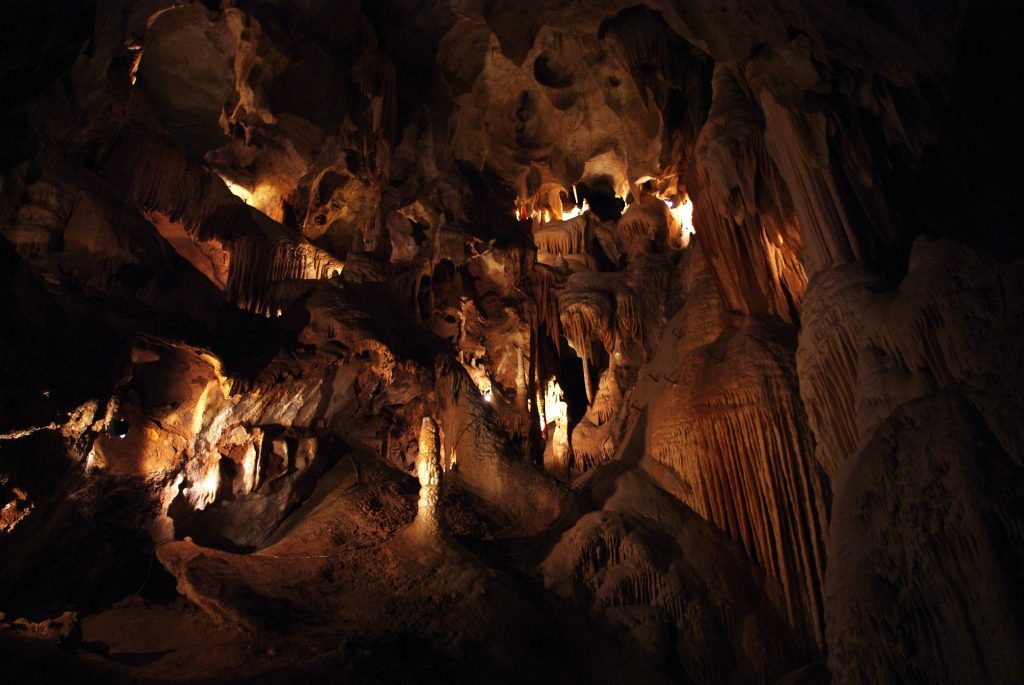
Image by M_Carted from Pixabay
The Jenolan Caves have to be seen to be believed. In fact, they’re probably one of the most stunning and slightly spooky attractions in the Blue Mountains National Park. The caves have been dated at around 340 million years old, which makes them the oldest open caves in the world. They consist of limestone formations and underground rivers and you can explore 10 of the approximately 400 caves in the area.
Each cave is different, and it can be hard to decide which to explore when you’re in the Blue Mountains National Park. There are over 40 kilometers of multilevel passages. If you’re having trouble choosing, try the Lucas Cave, which includes the huge and stately Cathedral Chamber. This cave is often used for weddings as it’s wide enough for a crowd and has incredible acoustics.
Enjoy the Skywalk at Scenic World
If you aren’t afraid of heights, then you need to spend some time at Scenic World while you’re in the Blue Mountains National Park. This area is deliberately designed to allow you to see as much of the park as possible from the best possible vantage points. And this attraction is usually part of any packaged deal or tour to the park, so you know that it must be good!
Scenic World includes a Scenic Skywalk, where you can walk 270 meters above the ravines over a glass-bottomed platform. From this vantage point, you’ll get to see the rainforest canopy in every direction before getting into a carriage to see even more. From the carriage, you can see the Three Sisters, Jamison Valley, and Katoomba Falls without leaving your seat. You can also try the Scenic Walkway, an environmentally friendly elevated walkway in the Jamison Valley. The Scenic Railway is also popular. It includes the steepest incline in the world at 52 or 64 degrees as it descends down into the depths of the Jamison Valley.
Take a break to admire the Blackheath
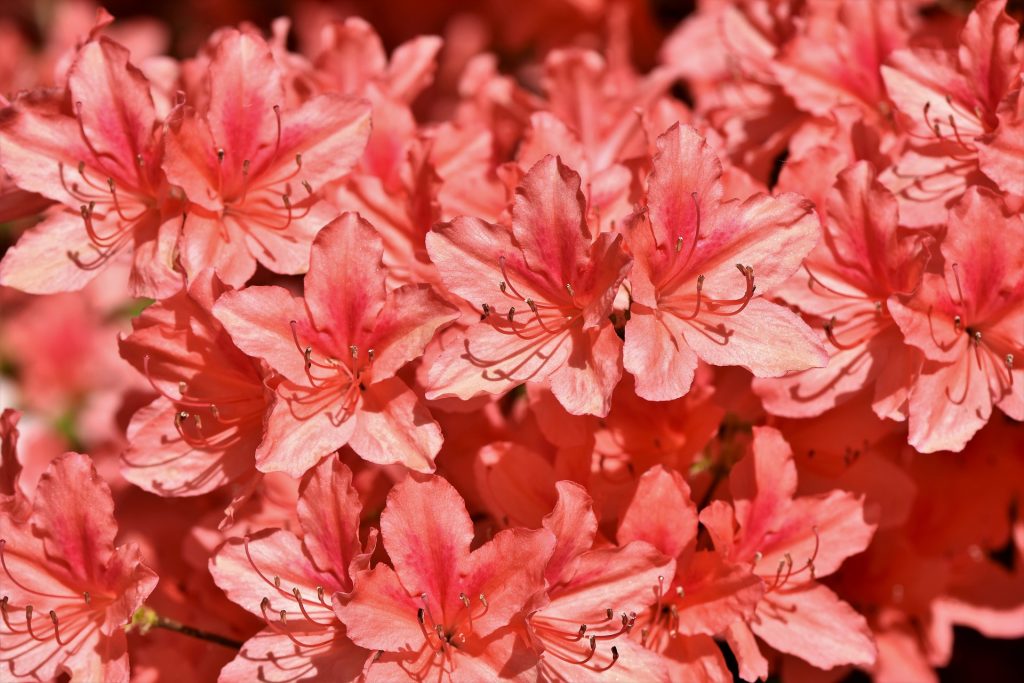
Image by Capri23auto from Pixabay
Blackheath is famous for its flowers. Every year the town holds what’s known as the Rhododendron Festival’, which celebrates its favorite flower. Seeing these incredible blooms all over the town in the spring is a sight that shouldn’t be missed. The center of town is also a great place to rest and grab some food. It includes some great galleries, cafes, and the famous Rhododendron Gardens.
Blackheath makes a great base for your explorations of the Blue Mountains National Park. There is some stunning scenery in the area and some popular walks including the challenging 9.1-mile Grand Canyon trail or the easier Evans Lookout Trail. If you have the time, make sure you check out the Victory Theatre Antiques Center, a fabulous place to pick up some relics from the past.
Challenge yourself for the Extreme Hiking Trails
There are more than 140 kilometers of hiking and heritage trails in the Blue Mountains National Park. This is one of the most popular activities in the park, and some of the trails date back to 1825. Fortunately, there are hikes that will suit almost every taste, group, and ability level.
The National Pass is one of the most popular. It starts at Conservation Hut and enters the Valley of the Waters. You’ll pass by waterfalls and the historic Grand Stairway, built more than a century ago, before stopping at Jamison Lookout. If you’re visiting with the family, try the Jellybean Track, which goes down Glenbrook Gorge to Jellybean Pool. This is a great hike on hot days, as the pool is perfect for even the smallest and weakest swimmer. Or try the Fairfax Heritage Track, suitable for very small children, strollers, and wheelchairs.
Wentworth Falls
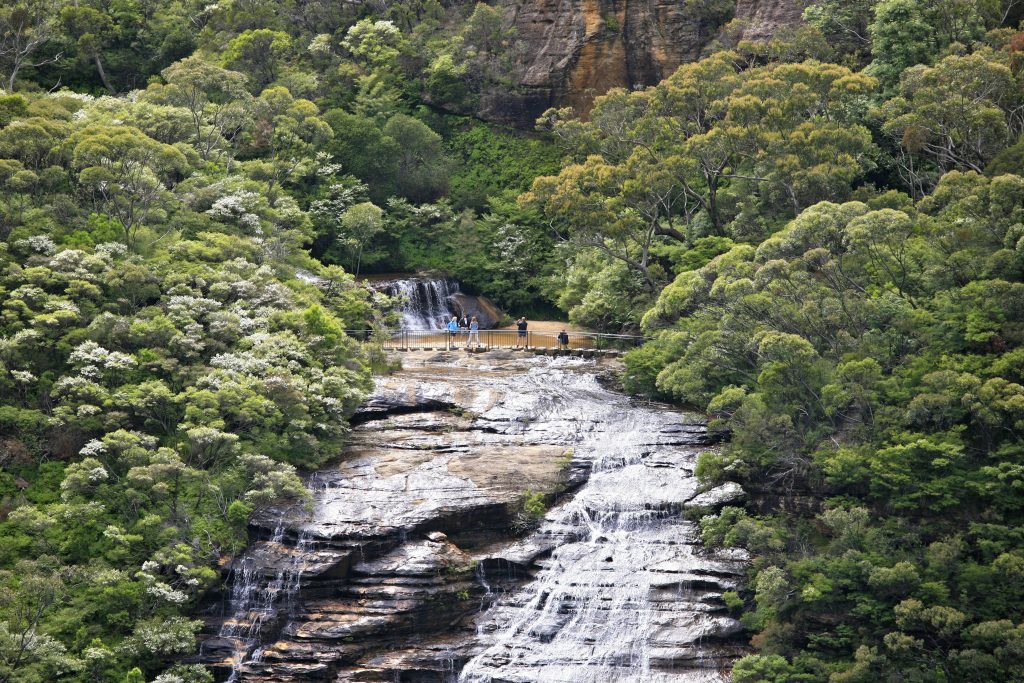
By Alex Proimos from Sydney, Australia – Blue Mountains – Wentworth Falls, CC BY 2.0, https://commons.wikimedia.org/w/index.php?curid=25649782
There are lots of waterfalls in the Blue Mountains National Park because of the seasonal rainfall. But Wentworth Falls is one of the most popular, and it’s stunningly beautiful as well. If you enjoy hiking, you can take Darwin’s Walk from the Wentworth Falls station to the Falls. It will take you about 2 hours to get there and the walk is fairly easy and suitable for almost all levels. The falls are also fairly close to Katoomba, so you can explore both of them on the same day.
Once you reach the falls, you can take pictures, swim, or just enjoy the beautiful natural setting. If you want to swim, make sure that you take the Wentworth Pass track to get down to the bottom of the falls, where swimming is safest. You can also grab a snack while you’re in the area at the Conservation Hut, where the food is almost as good as the views.
Mount Wilson
Mount Wilson is a tiny village and mountain in the Blue Mountains National Park. It’s about 100 kilometers west of Sydney and only around 218 people live in the town, which makes it almost unbearably quaint. This area enjoys stunning natural beauty and is surrounded by rainforest, bushland, canyons, and bushwalks. And within the town, there are some lovely historic houses and exotic gardens you can explore.
Mount Wilson is like a slice of the past, so you won’t find shops, ATMs, or internet in this area. In fact, visiting there will force you to disconnect from the online world and pay attention to the natural world around you.
When you visit this area, you need to respect the natural surroundings. Don’t leave your litter or anything else behind that might harm the environment. There are lots of attractions around, so make sure you put aside a day to explore. Try the Wynnes Rocks or DuFaurs Rocks lookouts for stunning views, The Turkish Bath Museum for some history, or the Waterfall Reserve for a stroll through the rainforest.
Spot the Stunning Waterfall in Leura
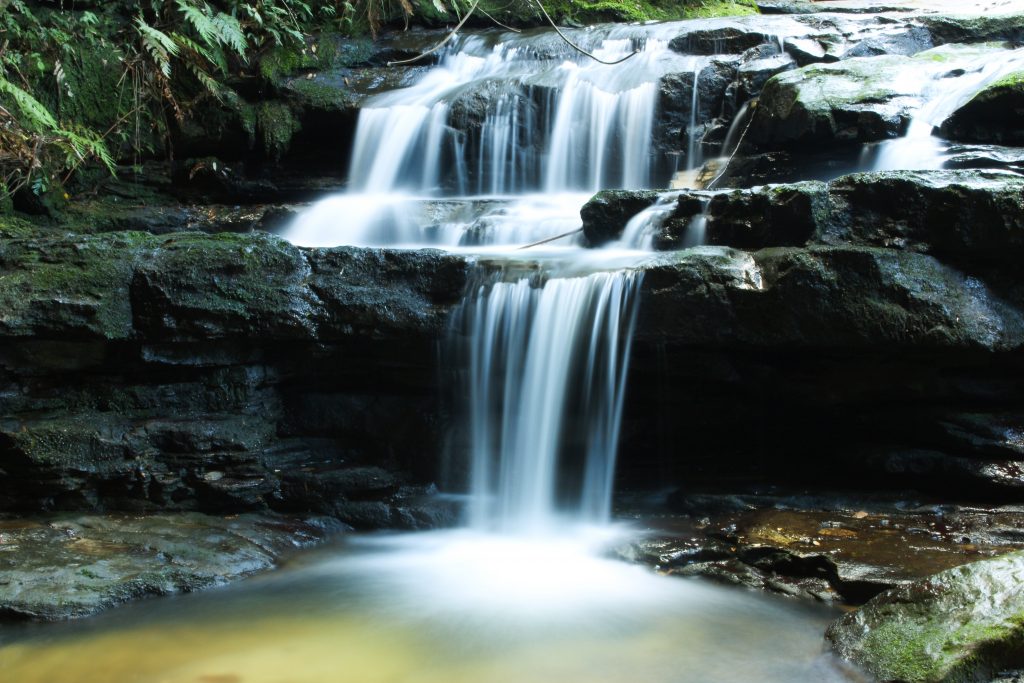
By Timovchinnikov – Own work, CC BY-SA 4.0, https://commons.wikimedia.org/w/index.php?curid=79413392
Leura Village is a postcard pretty town between Wentworth Falls and Katoomba. It offers lots of stunning natural gardens that are open to the public, quaint shops, and lots of great restaurants and cafes. If you want a picturesque base during your visit to the Blue Mountains National Park, then this is the place.
There are also lots of attractions to see around Leura. One of the most popular spots is the Leura Cascades, where there’s a great picnic ground close to the beautiful water feature. Or if you’re looking for great views, try the Sublime Point Lookout. It’s absolutely perfectly named.
Go on an Excursion to Faulconbridge
Faulconbridge is a town about 30 minutes’ drive from Katoomba in the Blue Mountains National Park. This small town is a little less touristy than other options, which means you’ll be able to have a more authentic experience. The scenery in this town is spectacular, and there are also some interesting bushwalks and historic landmarks for you to explore.
Faulconbridge contains Norman Lindsay’s Gallery. He was the controversial artist and author who wrote “The Magic Pudding” A book that’s still popular in Australia today. Even if you don’t know his work, the grounds of his sandstone cottage are beautiful and worth exploring. The town also boasts the grave of Sir Henry Parks, named the Father of the Federation for his role in bringing together the six colonies of Australia.
While you’re visiting Sydney or New South Wales, make sure you make it out of the cities. And a great way to do that is by spending time in the spectacular Blue Mountains National Park.

